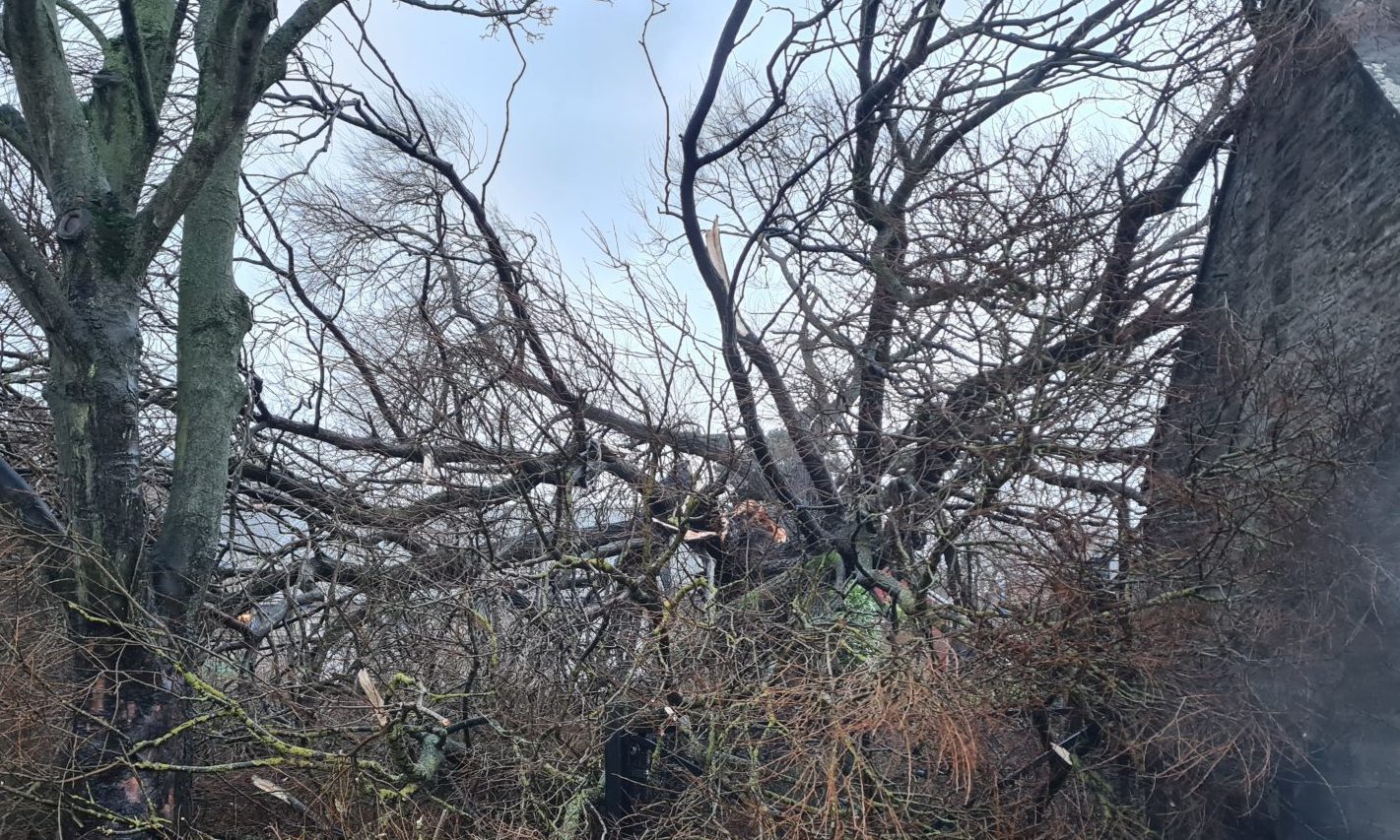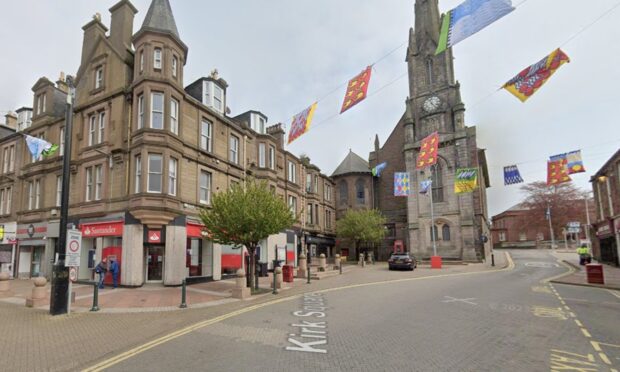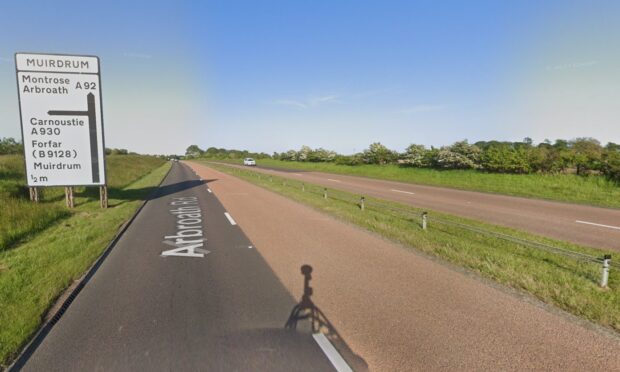Storm Gerrit looks to have claimed Carnoustie’s famous Dibble Tree.
The protected tree grew from a willow dibble – a gardening tool – left in the ground by Carnoustie’s founding father Tammas Louson in 1797.
But on Monday it suffered serious damage in the rain and high winds which swept the area.
The tree sits on Ferrier Street beside the local theatre of the same name.
It even survived a 19th century lightning strike that split its trunk almost to the roots.
But there are fears the Storm Gerrit damage could mean the end of the celebrated specimen.
The sight of its broken branches was met by sadness by Colourful Carnoustie.
In 2017, group members led an effort to tidy up the area around the 30-foot tall cricket bat willow and promote its importance in Carnoustie’s history.
Late Angus Provost and Carnoustie councillor Helen Oswald prompted the move to apply a tree preservation order to the dibble tree.
It was due to be topped by tree surgeons in the spring according to town councillor David Cheape.
“This is a very unfortunate victim of the gale,” he said.
“Once things calm down we will take a look.”
The story of the Dibble Tree
Colourful Carnoustie charted the Dibble Tree’s fascinating history in a board erected beside it in 2017.
It reveals Louson’s part in creating the community between Easthaven and Barry on ground which was reportedly useless for cultivation at the time.
Louson dreamt he should buy some of the land and snapped it up at a bargain price because of its poor quality.
He left the dibble in the soil whilst planting potatoes and the quick-growing willow took root.
Carnoustie takes its name from the ‘craw’s noustie’ or crow’s nest of the birds which made it their home.
For generations the Louson – later Lowson – family lived in the nearby cottage he built.
Those included his great-great-grandson David Lowson, who died earlier this year at the age of 102.
In 1998, cuttings were taken from the tree and planted in the grounds of Lousen Park sheltered housing in Park Avenue.













